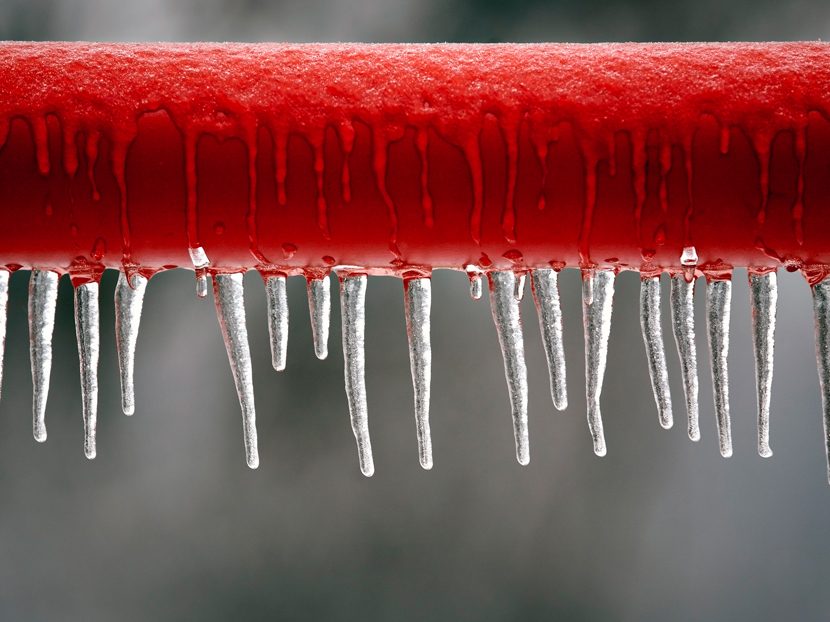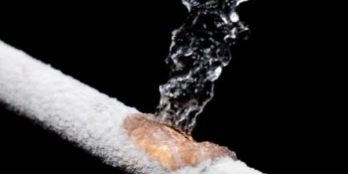The Air Conditioner Pipe Is Frozen Solid - What Do I Do? Guidance for Resolution
The Air Conditioner Pipe Is Frozen Solid - What Do I Do? Guidance for Resolution
Blog Article
We have noticed this article pertaining to Why Is Ice On My Outside Air Conditione directly below on the net and figured it made perfect sense to talk about it with you on my blog.

Intro
Uncovering that your AC pipeline is iced up can be worrying, specifically during warm summer months when you depend on your air conditioner one of the most. Recognizing what to do in such a circumstance is critical to stop additional damages to your air conditioning system and guarantee your comfort inside your home.
Understanding the Causes
A number of factors can add to the freezing of an air conditioning pipeline. Comprehending these causes can aid you resolve the problem properly.
Absence of Airflow
One usual cause of an icy a/c pipeline is inadequate airflow. When the air flow over the evaporator coil is limited, it can create the coil to drop below freezing temperature, leading to ice formation on the pipe.
Low Refrigerant Levels
Insufficient refrigerant degrees in your air conditioning system can also lead to an icy pipeline. Reduced cooling agent degrees can cause the stress in the system to go down, causing the freezing of dampness on the evaporator coil.
Cold Weather Conditions
In chillier environments, freezing temperature levels outside can add to the cold of AC pipes. If your air conditioner unit is not effectively shielded or if there are leakages in the ductwork, cold air can infiltrate the system, creating the pipeline to ice up.
Dirty Air Filters
Filthy or stopped up air filters can limit airflow in your air conditioner system, causing various issues, consisting of an icy pipe. It's necessary to replace or clean your air filterings system frequently to ensure appropriate airflow and prevent ice build-up.
Indications of a Frozen AC Pipe
Recognizing the signs of an icy a/c pipeline is crucial for punctual action.
Minimized Airflow
If you see a considerable decline in air flow from your vents, it could show a frozen pipeline.
Ice Buildup on the Pipe
Visible ice buildup on the cooling agent line or the evaporator coil is a clear indication of an icy AC pipe.
Odd Sounds from the Unit
Unusual sounds, such as hissing or bubbling, originating from your AC system can indicate that there's ice present on the pipeline.
Immediate Actions to Take
When faced with an icy AC pipe, it's essential to act promptly to avoid additional damages to your air conditioning system.
Switching off the AC
The primary step is to turn off your air conditioning unit to prevent the system from running and intensifying the problem.
Checking for Blockages
Examine the location around the indoor unit for any blockages that might be blocking airflow, such as furniture or drapes.
Defrosting the Pipe
You can utilize gentle methods like positioning towels soaked in warm water around the icy pipe to aid thaw it slowly.
Preventive Measures
Taking safety nets can aid prevent future occurrences of a frozen AC pipeline.
When DIY Methods Fail
If your efforts to thaw the pipe or address various other issues are not successful, it's time to call in a professional.
Significance of Hiring a Professional HVAC Technician
A licensed HVAC service technician has the proficiency and tools needed to identify and repair issues with your air conditioning system securely and efficiently.
Routine Maintenance Checks
Set up regular maintenance talk to a specialist HVAC service technician to make sure that your a/c system is running successfully.
Altering Air Filters
On a regular basis replace or cleanse your air filters to prevent airflow limitations and maintain ideal performance.
Shielding Exposed Pipes
If your air conditioning pipes are exposed to cold temperature levels, consider insulating them to stop freezing during winter season.
Seeking Professional Help
If DIY techniques fail to fix the concern or if you're unclear concerning exactly how to continue, it's ideal to seek help from a certified HVAC technician.
Conclusion
Taking care of a frozen air conditioner pipe can be an irritating experience, but knowing how to react can assist minimize damage and restore comfort to your home. By understanding the causes, identifying the signs, and taking prompt activity, you can efficiently resolve the issue and avoid future occurrences.
Frozen AC Line: Why It Happens & What To Do About It
A frozen AC line can be a rather peculiar sight in a place like Phoenix, Arizona where nothing ever freezes. In this post, we’ll discuss what makes an air conditioner line frozen – and what you can do about it.
Dirty Air Filters
Did you know that you should be cleaning or replacing your air filters on a monthly basis? Failing to do this can result in airflow issues that, in turn, cause your evaporator coils and lines to freeze over. You’ll notice a buildup of ice on both components, although the buildup on your pipes will, of course, be more evident unless you open your air condition up to reveal the coils.
What To Do About It
Give your air filter a good cleaning if it’s reusable. If not, replace the filter outright. Next, switch your air conditioner’s fan setting on and leave it there for 2-3 hours. This will draw warm air in, helping to thaw your evaporator coil. You can also check out this article for some tips on cleaning the coils themselves if you’d like to speed the process up. Before you switch the unit back to its normal state, make sure the supply vents are completely unobstructed and free of dust or other debris.
If you keep having this issue even after replacing your filters regularly, contact a local HVAC repair company and have them inspect your evaporator coil, ductwork, and any other components that may be at fault. If you live in the Phoenix, Arizona area, give American Home Water and Air a call.
Low Refrigerant Levels/Leakage
What To Do About It
Contrary to what air conditioner “recharge” companies often tell their clients about refrigerant, it should never need to be simply refilled. You see, refrigerant runs in what experts refer to as a “closed loop.” Refrigerant really shouldn’t be leaving that loop. If it is, you’ve got a leak.
Paying someone to come and pump more refrigerant into your system (aka “recharge” it) isn’t the solution. Doing that will simply kick the can down the road. Besides, refrigerant leaks can be harmful to the environment and people in your home.
Rather, you need to take care of the leak with the help of a technician. Check out this article for some more information about dealing with air conditioners that are leaking refrigerant. Before you contact a technician, switch your thermostat to the off position. Then, switch the fan setting on and let it run for 2-3 hours so the unit can thaw.
Improper Temperature Setting
Improper temperature settings can also cause a drop in your air conditioner’s pressure. What many people don’t realize is that air conditioners are actually designed to run when temperatures have fallen above roughly 60 degrees Fahrenheit. If you run the unit when it’s cold outside, you’ll run into many issues, including frozen components.

Hopefully you liked our topic on How can I fix an air conditioner’s frozen pipe?. Thanks a lot for taking a few minutes to browse our posting. Sharing is nice. You just don't know, you could be helping someone out. Thank-you for taking the time to read it.
Request Free Estimate Report this page